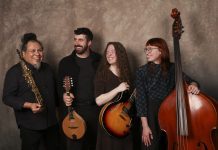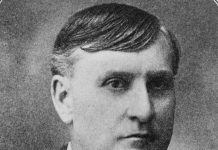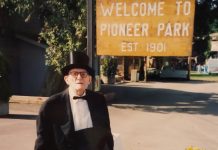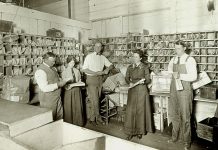Saint Patrick’s Day, March 17, has a long history. By the turn of the century, the holiday commemorating Ireland’s patron saint had become a time when many Americans, both Irish and non-Irish alike, celebrated the Emerald Isle.
Irish immigration to America skyrocketed during the Irish Potato Famine in the 1840s and its aftermath. One of the largest immigrant groups in the nineteenth century, many Irish and their descendants came to Bellingham.
“Bellingham looks green today,” the Bellingham Herald wrote on St. Patrick’s Day 1915. Homes and businesses flew green flags. Many people showed their Irish spirit by a “wearin’ of the green,” donning green ribbons, neckties and other emblems. In 1904 the Globe Clothing Store even gave out free shamrocks to wear on the holiday. “St. Patrick’s Day,” noted the Herald in 1910, “…is the day that makes the whole world green.”
St. Patrick’s Day Community Events
Several Catholic organizations organized annual St. Patrick’s Day celebrations during this period in Bellingham. With their many Irish parishioners, the Sacred Heart Catholic Church and Church of the Assumption held special masses as well as literary and musical programs on the holiday. In 1920, for example, the Church of the Assumption sponsored a special program at Liberty Hall with Irish folk songs, readings, and speeches.
The Knights of Columbus, a Catholic fraternal organization, also held St. Patrick’s Day lectures and programs. In 1915, for example, they met at their hall to listen to attorney Stanley Padden of Seattle. There was a long musical program. The Church of the Assumption Choir performed “Come Back to Erin” and a medley of folk songs. Entertainment also included a juggling act and a group of young girls who sang “A Bunch of Shamrocks.”
By far the largest annual holiday celebration in Bellingham was sponsored by the Ancient Order of Hibernians, an Irish fraternal organization. Marking the day with speeches, readings, and folk music, the group invited prominent speakers. In 1910, the Hibernians met at the Beck Theater for a special address from Bishop Edward O’Dea of Seattle. All proceeds from the event went to St. Joseph’s Hospital, then operated by the Sisters of Charity.
St. Patrick’s Day Dances
Dances were a popular way to celebrate St. Patrick’s Day. One of the top social events of the year during the period was the annual firemen’s ball, benefitting the firemen’s relief and pension fund. The annual “hop” was held in a rented hall with a live orchestra providing music on or near St. Patrick’s Day. The event was always well attended. In 1911 around 300 couples attended the dance at the Fairland Skating Rink.
Friends also held their own St. Patrick’s Day dancing parties. In 1920, for example, 35 couples enjoyed a farewell dancing party at Garden Hall in honor of Edna Newberry, who was moving to Vancouver, B.C. Heun’s jazz orchestra provided live music. The hall was decorated in green and white for the holiday.
Private Parties
People often organized their own special St. Patrick’s Day parties. Regular gatherings could also take a St. Patrick’s Day theme. The Woman’s Auxiliary of the Knox Presbyterian Church, for example, held a St. Patrick’s Day tea at Mrs. Secrest’s home on Franklin Street in 1915. For Blanche Franklin’s 12th birthday in 1919, guests gathered around a luncheon table decorated with shamrock place-cards and spent the afternoon playing party games.
Guests could enjoy a time for games, Irish folk music, and playing cards. Shamrock bouquets might be given as favors. Irish symbols such as harps, pipes, and shamrocks made for lovely decorations, as well as greens like ferns. At a 1911 YWCA party the upper floor of the building was decorated with little green flags and the lower floor with hundreds of shamrocks. Inviting male friends as guests, the group put on a short program of Irish music and readings. A high school girls gymnasium class performed the Irish lilt.
Every good hostess decorated her dining room table with an elaborate centerpiece. At a 1914 party hosted by Echo Walling for Estelle Durgan of Blaine, guests enjoyed a four-course luncheon at a table decked with “a large black hat, with a green ribbon bow, adorned the center of the table, while at each plate were tiny black hats, with little pipes tied with green ribbon,” which were given as favors to the guests.
An Irish Legacy
In 1907, the Ancient Order of Hibernians sponsored a holiday talk by Seattle lawyer James. T. Lawler. Speaking of Irish character and history, he praised their love and struggle for liberty: “No matter to whatever end of the earth the Irishman is sent by the vicissitudes” of Ireland’s tumultuous history “he remains proud of one fact, and that is of his historic lineage.”
As the Irish became an important part of American society, St. Patrick’s Day emerged as a holiday to celebrate all things Irish and honor their contributions to their new home. And Washington seemed a perfect home, after all. “Puget Sound,” remarked the Bellingham Herald in 1904, “is perpetually decked for the festival by a wearin’ of the green.”










































